February feels like the eye of the storm for us gardeners – there’s just enough time between the winter pruning rush and the flurry of spring to take a deep breath, and begin thinking back on what worked especially well last year and what projects we might like to tackle this year.
Most of my February days are spent indoors, planning, but there’re still some outdoor things to do if you’re feeling resistant to frostbite! Which brings me to:
What’s goin’ on in the garden for February?
Planning and design
It’s too dashed cold out to enjoy much work outside, and all the best plants will be arriving soon in the nurseries, so why not take a bit of time to plan out what veggies you’ll grow this year, or think on that difficult patch which hasn’t quite shown its potential?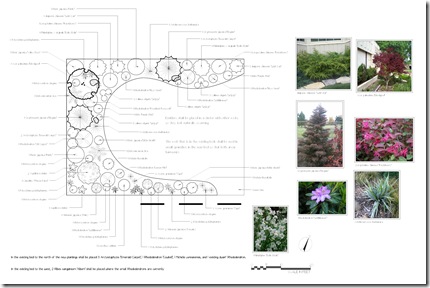
I find it easiest to plan when I’ve drawn up a quick measured sketch on graph paper – I can look at how big plants are supposed to get and make sure to give each one enough room. They always look so dinky in their pots, and it’s easier to have willpower and space them properly if I’ve drawn it out beforehand.
Sometimes I’ll make an inspiration board by printing out pictures of plants from the internet and collage-ing them over a photo of my space to get a feel for how things will look. You can do that without wasting paper, too, by opening up a bunch of photos on your computer screen, making each window smaller, then moving them around to see what foliage and flower combos work best.
Hurrah! It’s finally time to drool over the seed packets!
If you are in the Pacific Northwest, soon it’s going to be time to sow veggie and flower seeds (find out when to sow for your climate here). Fern, over at Life On The Balcony, has some wonderful tips for growing plants from seeds which will get you started.
I admit I usually buy my plants as starts, but after reading the amazing Baker Creek Heirloom Seeds Catalogue, I’m all inspired to start my own! I got this beaut of a booklet yesterday and was immediately captivated. Look at the pics online now, and sign up to get next year’s catalogue free.
Summer bulbs are in!
My local nursery just got the Dahlia tubers in (yay!), and soon there will be:
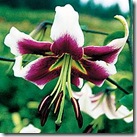 Lilies – try ‘Leslie Woodriff’, named after an eccentric Humboldt County lily breeder
Lilies – try ‘Leslie Woodriff’, named after an eccentric Humboldt County lily breeder (you can read the story of his involvement with the ‘Stargazer’ Lily in Flower Confidential
).
Gladiolus – Acidanthera or Peacock Orchid is my favorite – even the name is cool! They usually only bloom well the first year, but they are so elegant (and fragrant!) that I don’t mind replanting.
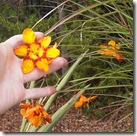 Crocosmia – the regular old orange ones are terribly invasive, but the politely clumping varieties ‘Lucifer’ and ‘Emily McKenzie’ (at right) are wonderful in the garden.
Crocosmia – the regular old orange ones are terribly invasive, but the politely clumping varieties ‘Lucifer’ and ‘Emily McKenzie’ (at right) are wonderful in the garden.
Also coming soon at the nursery are the usual Cannas, Callas, Tuberous Begonias, Anemones, and Ranunculus…
If you want to try something new, I love the easy-to-grow Zephyranthes, which spreads just fast enough that you have gifts to give your favored friends, or Sparaxis, a sturdy South African clumper which seems to be fairly drought-tolerant.
Get in one last dormant spray!
As soon as your fruit tree’s buds begin to swell and break, but haven’t actually opened, get in one last organic dormant spray (using lime-sulfur and dormant spray oil) to prevent fungus and insect problems this year.
Fertilize acid-loving evergreens like Rhododendrons, Conifers and Heathers
The best times to fertilize Rhododendrons are Valentine’s day, Father’s Day, and then a light application in November, and I usually keep my other acid-loving evergreens (conifers and heathers) on the same schedule.
Choose an organic fertilizer for acid-loving plants, which will support the soil’s natural micro-organisms and will break down slowly. Sprinkle it around the base of the plant, starting 6” away from the trunk and moving to the edge of the plant’s foliage. Scratch it into the soil or mulch, then water it in (or let the rain take care of that for you!).
One warning about organics is that dogs love them and will often go and roll in your fertilized areas. Watering them in helps reduce the scent, or you can topdress with some mulch after fertilizing.
Remove Hellebore foliage to let the blossoms shine
Frances over at Fairegarden has a great pictorial post on how and why to prune back the foliage on your Helleborus orientalis, the basic Lenten Rose. They are just beginning to bloom now and it’s always a pleasure to go out and remove the tatty leaves on them so you can better appreciate the flowers.
The fresh foliage on Hellebores comes out just as the blooms are at their best, and it’s so much easier to take out the brown old leaves now than to selectively pick out the old ones among the delicate new shoots.
I hope this gives you some inspiration to get out in the garden and do those few seasonal tasks that are left, and to go give your local independent nursery some business if you are so inclined! They are likely feeling dejected with the cold weather and slow business and would be very happy to see you.
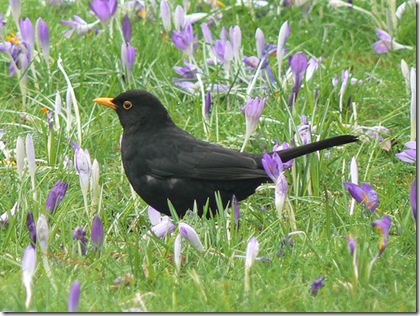
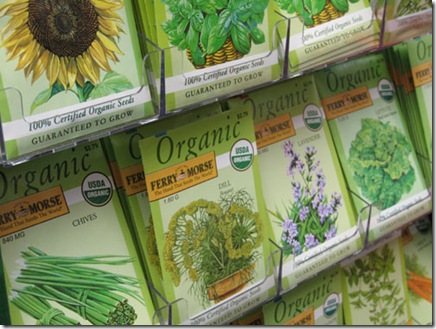
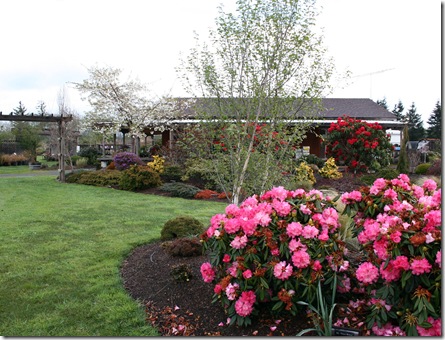
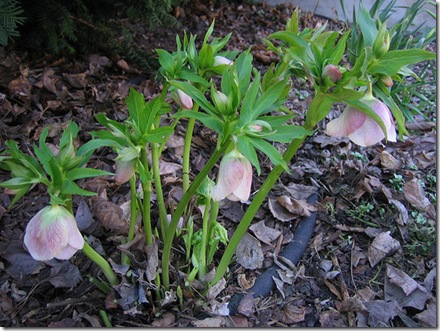
9 responses to “February Garden Maintenance for the Pacific Northwest”
Oooh, I love that Lily! Although I guess that’s not very surprising, since I LOVE Stargazers. I don’t think I’ve ever seen a lily that was that mauve-y color before…
Fern’s last blog post..Rose Container Ideas for Windy Balcony Gardens
Hi Genevieve, thanks for the link love and your wonderful to do list. Lilies are so wonderful, well aren’t all the flowers wonderful really? We have been missing them more than usual this winter and seeing something in bloom means spring will be here shortly. Hooray!
Frances
Frances’s last blog post..Cutting The Hellebores-2009 Edition
Very inspiring, yes! I am excited about redesigning parts of my gardens this year and like your idea of the collage of photos on the computer screen. Very cool idea. I need to get seeds now too…oh, much to do.
Aerie-el’s last blog post..RED, WHITE, AND GREEN
Of course I didn’t know about pruning the Hellebores to show off the flowers. Guess what I’ll be doing this weekend!! Also meeting with our designer this weekend to decide whether or not to put my garden on this year’s tour. The garden is only a year old I think it’s too young and we should wait until next year. Your opinion missy???????????????
Hey guys! Thanks for all your nice comments!
Iona, I’d tend to agree with you that a year old might be too early. I usually think the third year is perfect, because the shrubs and trees have started to show character by then, and the perennials have taken off perfectly.
That said, I’ve seen a few early gardens on the garden tour and they are fun because then you can put it on the garden tour in five years and people can see how its changed! So you could go either way!
I taught a class on winter seed sowing, with a new hands-on portion. The space was less than optimal (people were crowded) but it was fun, People were all excited about taking their seeds home, sown snug into a milk jug. And nice pick on the seeds in your photo–even though Ferry Morse is now located in Kentucky, it was founded in Detroit (in1856 as Gardner, Ferry & Church). 🙂
Monica’s last blog post..Garden Inspiration
OH.. I kind of segued there. What I meant was, I like teaching about gardening in February!
Monica’s last blog post..Garden Inspiration
Neat, Monica! I can just imagine the happy gardeners trailing out of your class happily holding their milk jugs full of potential plants. I really admire that you can do in-person classes – I love gardeners but I feel tongue-tied at the thought of speaking in front of so many! You are totally right, though, this is the perfect time to brush up on skills (or teach them!).
Great blog Benevieve. So much helpful information for us amateurs. Thanks.
Melanthia’s last blog post..SAGBUTT Blossoms